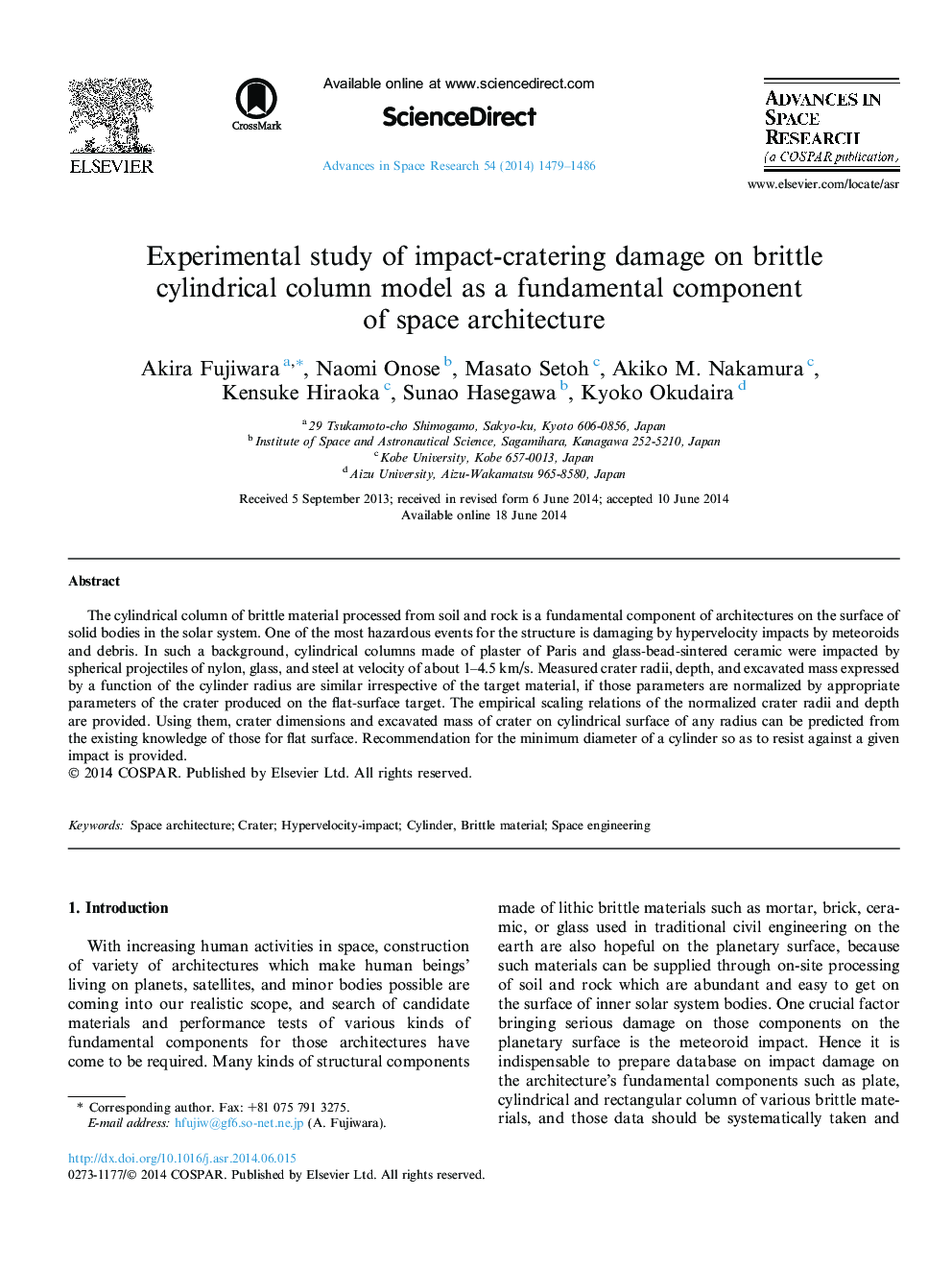| Article ID | Journal | Published Year | Pages | File Type |
|---|---|---|---|---|
| 1764590 | Advances in Space Research | 2014 | 8 Pages |
The cylindrical column of brittle material processed from soil and rock is a fundamental component of architectures on the surface of solid bodies in the solar system. One of the most hazardous events for the structure is damaging by hypervelocity impacts by meteoroids and debris. In such a background, cylindrical columns made of plaster of Paris and glass-bead-sintered ceramic were impacted by spherical projectiles of nylon, glass, and steel at velocity of about 1–4.5 km/s. Measured crater radii, depth, and excavated mass expressed by a function of the cylinder radius are similar irrespective of the target material, if those parameters are normalized by appropriate parameters of the crater produced on the flat-surface target. The empirical scaling relations of the normalized crater radii and depth are provided. Using them, crater dimensions and excavated mass of crater on cylindrical surface of any radius can be predicted from the existing knowledge of those for flat surface. Recommendation for the minimum diameter of a cylinder so as to resist against a given impact is provided.
